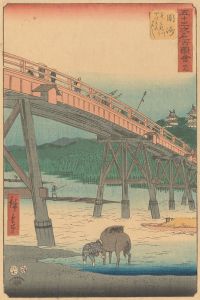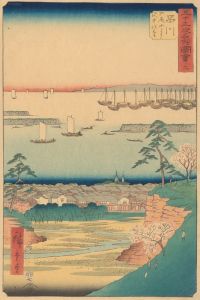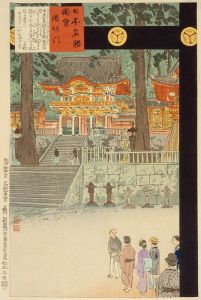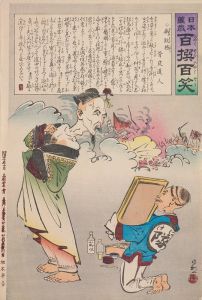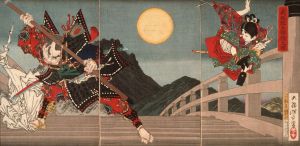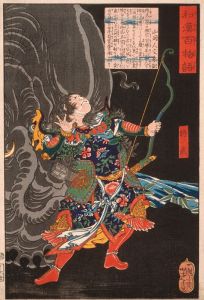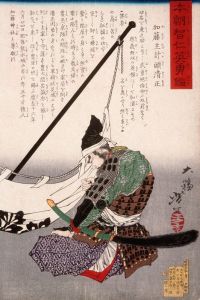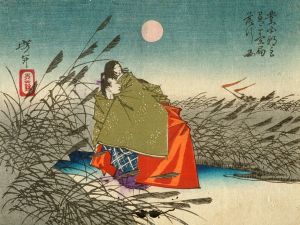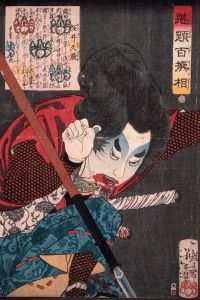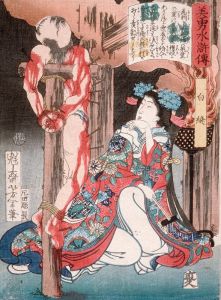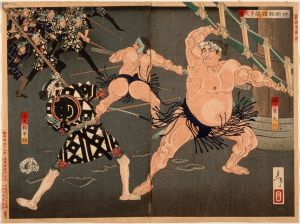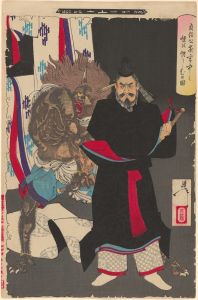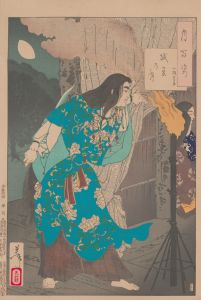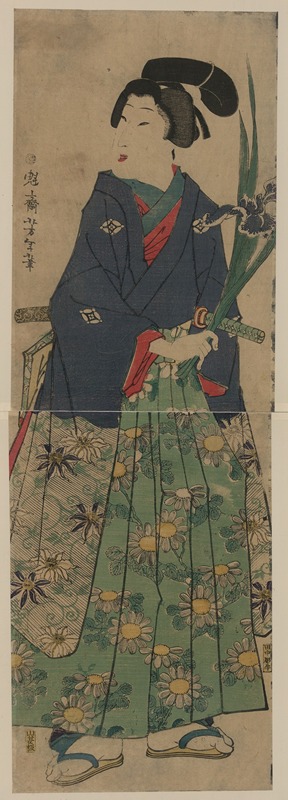
Kakitsubata o matsu wakashū
A hand-painted replica of Tsukioka Yoshitoshi’s masterpiece Kakitsubata o matsu wakashū, meticulously crafted by professional artists to capture the true essence of the original. Each piece is created with museum-quality canvas and rare mineral pigments, carefully painted by experienced artists with delicate brushstrokes and rich, layered colors to perfectly recreate the texture of the original artwork. Unlike machine-printed reproductions, this hand-painted version brings the painting to life, infused with the artist’s emotions and skill in every stroke. Whether for personal collection or home decoration, it instantly elevates the artistic atmosphere of any space.
Tsukioka Yoshitoshi (1839–1892) was a prominent Japanese artist known for his work in the ukiyo-e genre, which flourished during the Edo period and into the Meiji era. One of his notable works is "Kakitsubata o matsu wakashū," which translates to "Young Man Waiting for Irises." This artwork is part of Yoshitoshi's broader oeuvre that often depicted historical, mythological, and literary themes with a distinctive style that combined traditional techniques with innovative approaches.
Yoshitoshi's career spanned a period of significant transition in Japan, from the isolationist Edo period to the rapidly modernizing Meiji era. His work is often seen as a bridge between the classical ukiyo-e tradition and the new artistic influences that came with Japan's opening to the West. Yoshitoshi is particularly celebrated for his ability to capture human emotions and the complexities of the human condition, which is evident in "Kakitsubata o matsu wakashū."
The artwork "Kakitsubata o matsu wakashū" features a young man in a serene natural setting, waiting among blooming irises. The irises, or "kakitsubata," are a significant motif in Japanese art and literature, often symbolizing the arrival of summer and the beauty of nature. The young man's contemplative pose suggests a moment of introspection or anticipation, themes that are common in Yoshitoshi's work.
Yoshitoshi's use of color and composition in this piece is noteworthy. The vibrant hues of the irises contrast with the more subdued tones of the young man's attire, drawing the viewer's eye to the flowers while also highlighting the figure's presence in the scene. The careful attention to detail in the depiction of the irises and the natural surroundings reflects Yoshitoshi's skill in rendering the beauty of the natural world.
The historical context of "Kakitsubata o matsu wakashū" is also significant. During the Meiji era, Japan was undergoing rapid modernization and Westernization, which influenced many aspects of Japanese culture, including art. Yoshitoshi's work, however, remained deeply rooted in traditional Japanese aesthetics and themes, even as he incorporated new techniques and perspectives. This blend of tradition and innovation is a hallmark of his artistic legacy.
Yoshitoshi's contributions to the ukiyo-e genre were substantial, and his work has been the subject of numerous exhibitions and scholarly studies. "Kakitsubata o matsu wakashū" is a testament to his ability to capture the essence of Japanese culture and the timeless beauty of its natural landscapes. The piece continues to be appreciated for its artistic merit and its reflection of a pivotal moment in Japanese history.
In summary, "Kakitsubata o matsu wakashū" by Tsukioka Yoshitoshi is a significant work that exemplifies the artist's mastery of the ukiyo-e genre and his ability to convey deep emotional and cultural themes through his art. The piece remains an important part of Yoshitoshi's legacy and a valuable example of Japanese art from the Meiji era.





